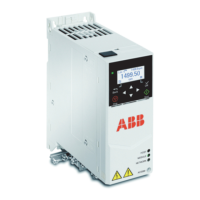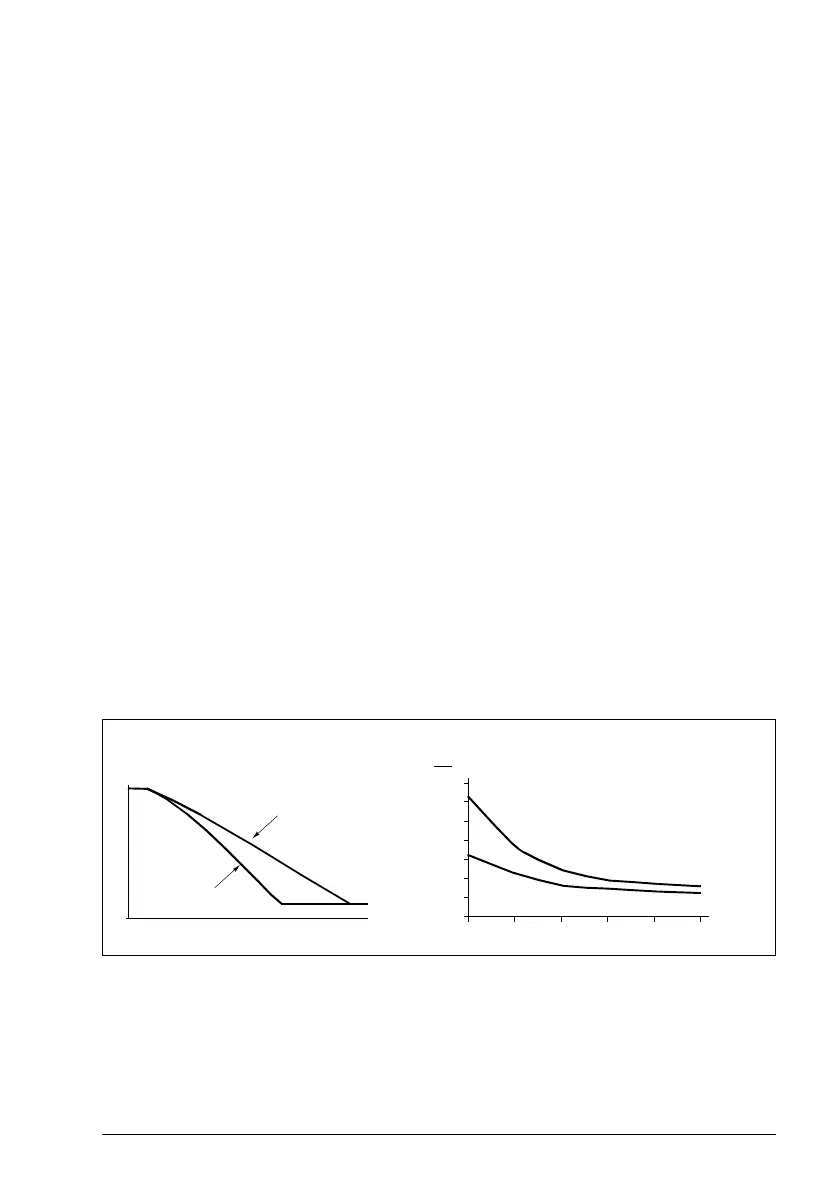Program features 71
U/f ratio
The U/f function is only available in scalar motor control mode, which uses frequency
control.
The function has two modes: linear and squared.
In linear mode, the ratio of voltage to frequency is constant below the field weakening
point. This is used in constant torque applications where it may be necessary to
produce torque at or near the rated torque of the motor throughout the frequency
range
In squared mode (default), the ratio of the voltage to frequency increases as the
square of the frequency below the field weakening point. This is typically used in
centrifugal pump or fan applications. For these applications, the torque required
follows the square relationship with frequency. Therefore, if the voltage is varied
using the square relationship, the motor operates at improved efficiency and lower
noise levels in these applications.
The U/f function cannot be used with energy optimization; if parameter 45.11 Energy
optimizer is set to Enable, parameter 97.20 U/F ratio is ignored.
Parameters
Parameters: 97.20 U/F ratio.
Flux braking
The drive can provide greater deceleration by raising the level of magnetization in the
motor. By increasing the motor flux, the energy generated by the motor during
braking can be converted to motor thermal energy.
The drive monitors the motor status continuously, also during flux braking. Therefore,
flux braking can be used both for stopping the motor and for changing the speed. The
other benefits of flux braking are:
• The braking starts immediately after a stop command is given. The function does
not need to wait for the flux reduction before it can start the braking.
T
Br
20
40
60
(%)
Motor
speed
No flux braking
Flux braking
T
Br
= Braking torque
= 100 Nm
Flux braking
No flux braking
t (s)
f (Hz)

